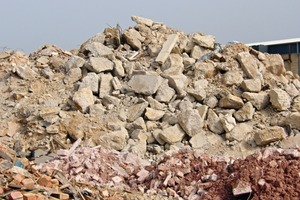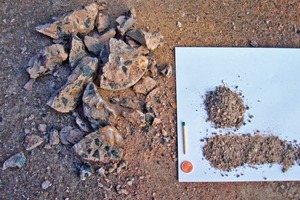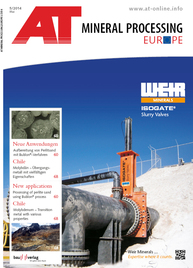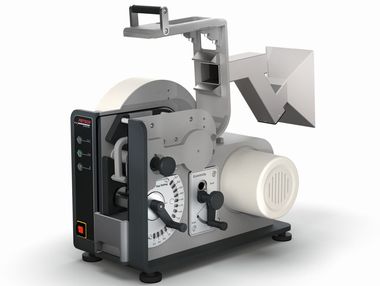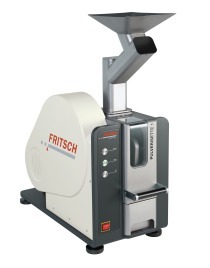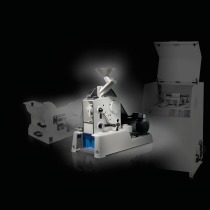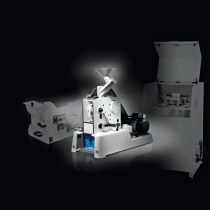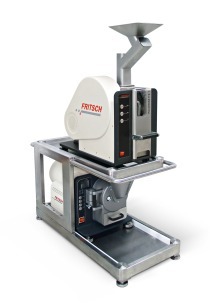Crushing concrete coarsely and fine
Concrete is a complex material, which its characteristics due to its composition and as a result of the systematic addition of additives can be adjusted very differentiated. However, this results in the demand to monitor this composition for two reasons: in order to ensure the desired useful properties and also to ensure the quality of the mixture.
A typical task is the crushing of concrete drilling cores or demolition waste. The greatest challenge for the sampling is to draw a representative sample from the demolition waste shown in Fig. 1, which can be processed in laboratory conditions. The extend of a single sample can be up 50 kg. Often concrete drilling cores are to be evaluated too. Place, time and conditions of the sampling taking are much more precise here. This has very positive effects on mistakes made during sampling. Are the concrete drilling cores too large, they are pre-crushed with a compactor or manually with a lump-hammer. Now the task determines the following course of the sample preparation. The Jaw Crusher PULVERISETTE 1 is suited for the pre-crushing of the concrete. Fig. 2 shows the pre-crushed drilling core, which was crushed in one step with the Jaw Crusher down to the possible final fineness.
As a matter of principal for the eluate, the grain size should be used which corresponds with the additional utilization. Since chunks of concrete like in the photo can not be analysed though, one has to assume approximately 10 mm for assessments, for other tests analytically fine samples are to be used.
According to the commercial waste ordinances, a fineness of below 0.2 mm is to be assumed. Is a material with a grain size of 10 mm in the first run a large amount of material is broken up. The distance of the crushing jaws is therefore adjusted accordingly wide. The for the determination of the eluatable materials required shares are sampled. For the analysis it shall be referred to DIN 38414, part 4 of the so called DEV S4-procedure. The remainder of the material is again processed with the smallest gap width of the Jaw Crusher. The grains are below 3 mm now. Fig. 3 shows besides the base material both the resulting grains. It is greywacke, which for example is used as rubble or trains.
The second step to the fine pre-crushing ensures that from the heterogeneous base material now a representative mixed sample of at least 50 g according to the commercial waste ordinances is achieved. Ideally suited for this task are the Rotary Cone Sample Divider LABORETTE 27 combined with the Vibratory Feeder LABORETTE 24. As a sample amount 100 g is assumed. The somewhat larger sample accommodates the representativeness and is the optimum amount for the fine comminution for obtaining the analytical fineness of the sample in the next mill. Preferred for this tasking are the Disk Mill PULVERISETTE 9 and the Planetary Mill PULVERISETTE 5 and Planetary Mono Mill PULVERISETTE 6 classic line. If the Jaw Crusher is used for samples for heavy metal analysis, the use of fixed and movable crushing jaws made of hardmetal tungsten carbide is recommended.

